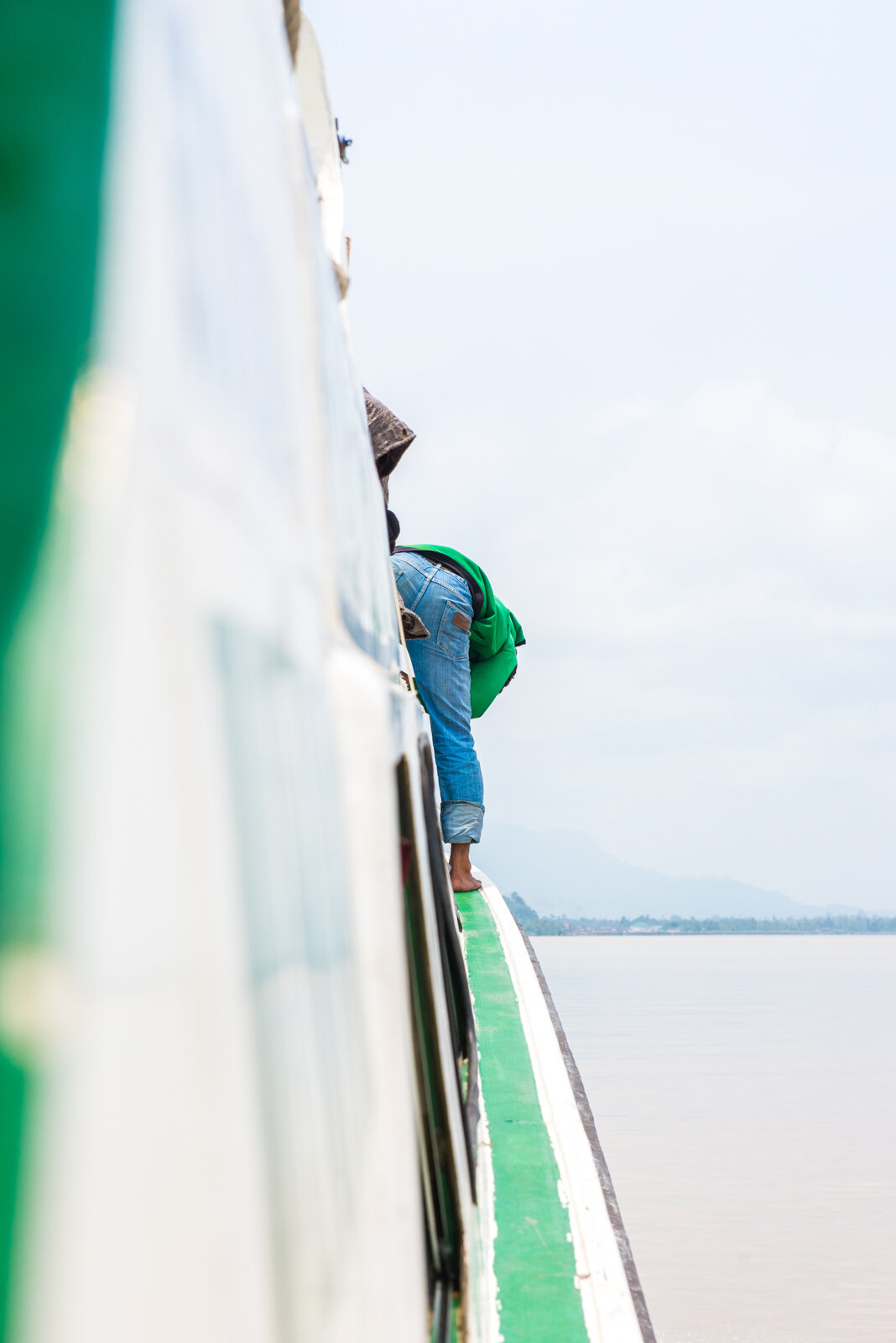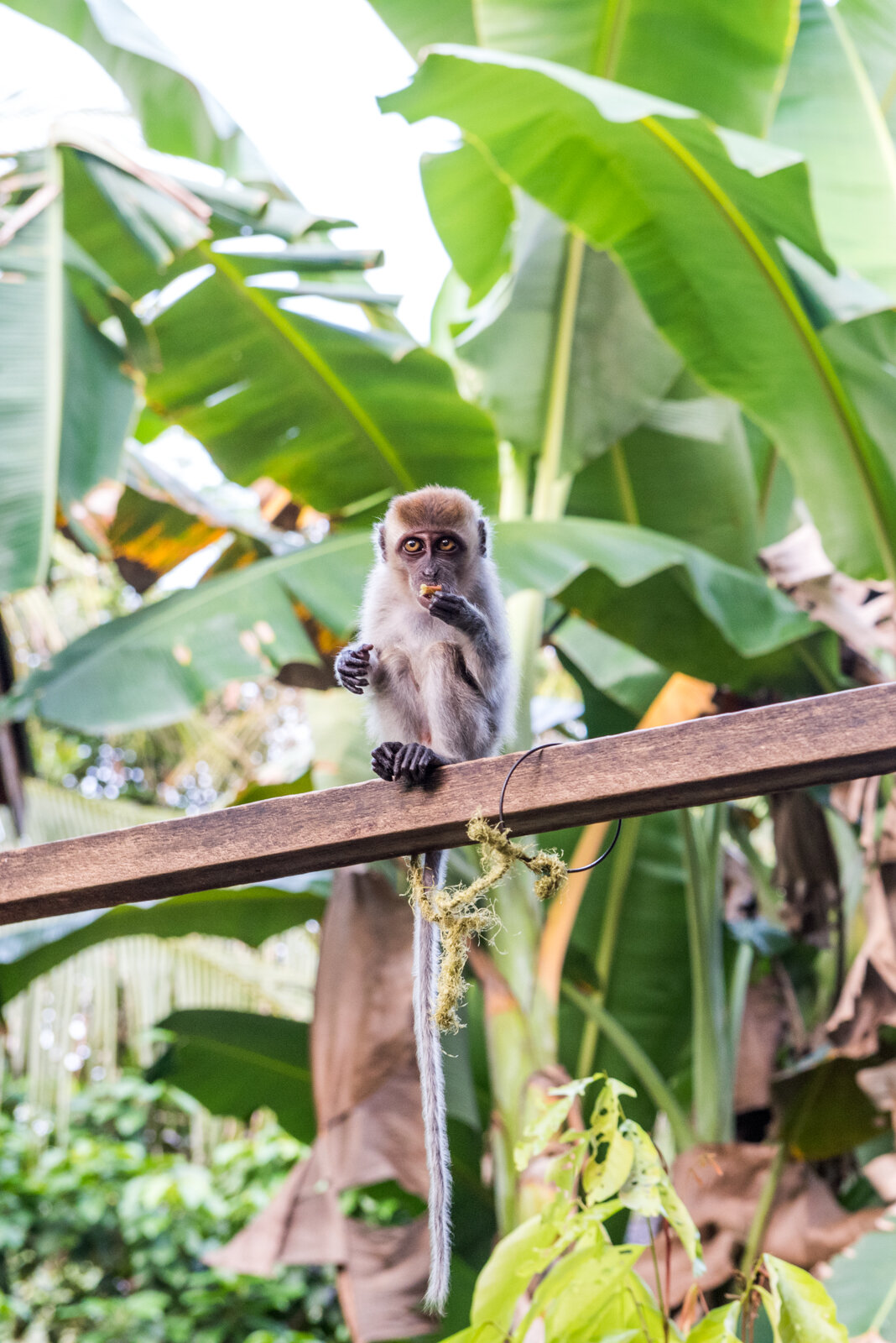
BORNEO RAPID ASSESSMENT VISUAL EXPEDITION;
The Journey
ROLE : DOCUMENTING EXPEDITION LIFE AND THE LOCAL DAYAK CULTURE
LOCATION : REMOTE RAINFORESTS OF NORTH KALIMANTAN, BORNEO
EXPEDITION LEADER : MARTIN HOLLAND
DATE : SEPTEMBER 2015
An overview of night life on the streets of Kalimantan, our last stop in civilisation before setting off on our two week expedition
“It was at this moment that I realised that this expedition was going to be much more than my previous travel & work… this was the beginning of true exploration.”
Pelabuhan Tengkayu Tarakan, the main water taxi pontoon, was a hive of activity the morning of our 3rd day of travelling to base camp. After 4 flights across 2 days, combined with humidity of the city, we couldn’t wait to hit the water and have the refreshing breeze spur us onto our next part of the journey.
While we waited for our turn, the pontoon was awash with people, cars, goods and trucks all heading to various destinations. We were destined for Malinau where we would be met by drivers from Long Setulang village, a settlement of local Dayak peoples on the edge of the Rainforest where we would be working.
Our water taxi can only be described as a traditional British canal boat, mixed with a London tube with two giant outboard engines mounted on the rear. The first time I saw one of these as we drove down the pontoon was a sight of one upside down, slowly sinking. It was at this moment that I realised that this expedition was going to be much more than my previous travel & work… this was the beginning of true exploration.
As we cruised up the Sesayap River at a surprising rate of knots away from the coast, the landscape on the banks soon changed from the urban sight of Tarakan, to farmland and smaller towns. Scars of deforestation were already visible this early into the expedition, with large logging operations taking place both on land and on the water, with logging barges chugging up and down the river channel. One of our main aims of this expedition was to document the environmental impact these operations have on both the landscape and wildlife, so before we had even arrived into our main rainforest research area we were already documenting the ever-changing landscape.
Our river journey came to an end at Malinau , a relatively large town where we were met by two 4x4s from Long Setulang. Having manhandled our rucksacks and equipment from the boat onto the trucks, we then had an hour and a half drive up into the more mountainous terrain. The roads soon turned from smooth tarmac to bumpy, pothole filled dirt tracks as we travelled into more and more remote areas. The village is located many miles from the nearest major town, and is situated next to our main research area of rainforest, which dates back 130 million years.
Setulang Village is a perfect example of a successful eco-tourism program operating in a remote village, supporting both the local people and surrounding environment, with the village consisting of around 800 Dayak Kenyah and Omah Long people. We owe a lot to these communities, who have set up a village level forest management board and have dedicated half of their territory to forest conservation. Now they are trying to develop a sustainable tourism economy to raise an income from their forests without damaging it. It really is incredible work, and a massive step forward against the damage that the palm oil trade is inflicting on Indonesia's rainforests.
On arrival into the village we had a very warm welcome by the locals and elders. The village was a hive of activity with old wooden huts that had reached the end of their life span being cut down, to be replaced with new wooden structures that had been sustainably sourced. I would be sleeping in one of the elders’ homes, which just so happened to also have a snack shop built into it…perfect! It’s a great way to contribute money back into the community. All though the villagers and myself didn’t speak each other’s languages, I felt extremely comfortable and welcome in their homes and enjoyed wondering around seeing the various work and leisure activities taking place.
The food that was offered to us was local, fresh and extremely delicious. It was great fun eating and laughing with the young children with whom I was sharing their home. Following on from dinner, the expedition team sat on the hard wooden floor in a circle, ready to discuss the plan for the day ahead.
The next day, we were to travel once again up river from the village to Tana Olen, a jungle camp located deep in the forest. This journey would take around three hours in wooden canoes, and we would head out in different teams with our guides speeding us on with their outboard engines. We would also be travelling in the canoes with all of our gear, that with the river levels lowering would make the journey pretty interesting.
Early in the morning with the sun rising over the village, we gathered our gear and congregated at the small wooden pontoon where we would leave civilisation behind and head deep into the forest. Somehow myself and two other men from the expedition team, ended up in a canoe with our guide and a large amount of equipment, meaning we sat lowest in the water. This would certainly make for an eventful journey through the small rapids…and boy I couldn’t wait. Each canoe was fitted with an outboard engine as well, meaning we would be propelled up river against the flow with no real issues.
We soon left the pontoon behind and with a final farewell to the gathered crowd, we were entering true, remote rainforest. As we turned the first corner of the river, we lost sight of Setulang and I could immediately feel the immensity of the forest around me. Soon the only sounds I could hear was various species of birds in the canopy, the splashing of the water against the bow of the canoe and the purr of the outboard engine.
The first patch of rapids we raced up with no issues, our guide skilfully working the engine and rocking the canoe as we made contact with the rocks underneath. However, the second area of rapids we came to a grinding holt as we wedged ourselves into the sandy riverbed. We quickly jumped out to lighten the load, meaning our guide could manoeuvre the canoe up to a deeper section. This quickly became a recurring theme and we were soon soaking wet, wading up to our knees for the 8th time. However, roughly around 3 hours later a wooden structure appeared in the distance. The river at this point was more of a stream, and the canoe was carried behind us as we walked the last 100 meters through the river. We had arrived at our home for the next 10 days.



























